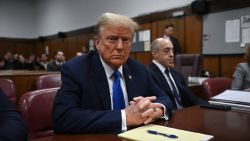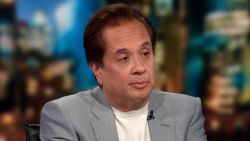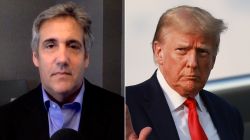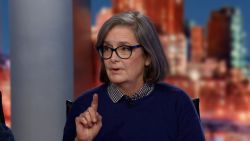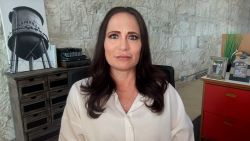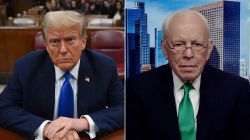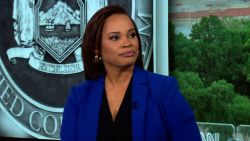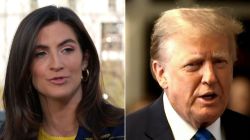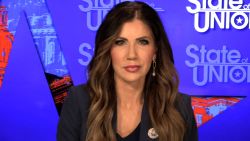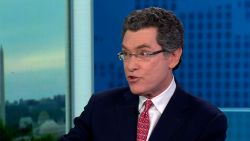After President Donald Trump tweeted Wednesday that he disagreed with US Centers for Disease Control and Prevention guidelines for safely reopening schools because they are “very tough” and “expensive,” the agency said it would issue new recommendations next week.
The move came as the Trump administration makes a concerted push for schools to reopen by the fall, even as cases surge in some parts of the country.
After Trump voiced displeasure at the CDC’s handling of the issue, the agency’s director said his recommendations shouldn’t be used as an excuse for not returning children to classrooms.
Instead, Dr. Robert Redfield and other members of the White House coronavirus task force said every effort must be made to bring students back to schools, suggesting doing otherwise would harm their health and development.
Trump has pushed to reopen schools as a way to allow parents to return to normal work, a step that could further fuel an economic resurgence.
On Wednesday morning, he also threatened he “may cut off funding” to schools that do not reopen, though the bulk of public school funding comes from state and local governments.
“I disagree with @CDCgov on their very tough & expensive guidelines for opening schools. While they want them open, they are asking schools to do very impractical things. I will be meeting with them!!!” the President tweeted.
During a press briefing a few hours later, Vice President Mike Pence said the CDC would issue new guidance on reopening schools next week. Both he and the CDC’s director said the agency’s recommendations should not be viewed as a barrier to returning children to classrooms.
“Remember it’s guidance, it’s not requirements, and its purpose is to facilitate the reopening and keeping open the schools in this country,” CDC Director Robert Redfield said.
Still, Pence said the White House would be “very respectful” of states and local communities who determine they cannot fully reopen schools.
He also downplayed Trump’s threat with withhold funding, suggesting instead the administration would work with Congress to encourage and incentivize schools to reopen.
“We’re here to help,” Pence said. “We don’t want federal guidance to be a substitute for state and local laws and rules and guidance. We’re here to assist with the shared objective, which I think is shared by every parent in America, which is we want to get our kids back. We want to get them back in the classroom.”
The CDC’s guidelines encourage hygiene, the use of cloth face coverings, and staying home when appropriate. It also suggests staggered scheduling, a back-up staffing plan, modified seating layouts to allow social distancing, physical barriers and closing of communal spaces.
Trump, who has advocated for reopening states amid surging coronavirus cases, said Tuesday he would pressure governors to reopen schools this fall during a discussion with educators, administrators, students and parents.
“We hope that most schools are going to be open,” Trump said at a White House event, baselessly claiming that some places will want to stay closed “for political reasons.”
“They think it’s going to be good for them politically, so they keep the schools closed,” the President alleged without evidence. “No way.”
“We’re very much going to put pressure on governors and everybody else to open the schools, to get them open,” said Trump, who has been anxious to reopen America to kick-start the economy and otherwise move on from the pandemic, despite its resurgence.
Most funding for America’s schools comes from the state and local level – over 90%, according to Education Secretary Betsy DeVos, but schools do get some targeted funding from the Department of Education. That federal funding often affects the nation’s most vulnerable students.
But educators and administrators have called on the federal government to supplement funding for personal protective equipment and other resources, such as additional school buses, to reconfigure classrooms in order to safely reopen.
“Congress provides federal education funding to support some of the most vulnerable young people in our country,” said Evan Hollander, a spokesman for the Democrats on the House Appropriations Committee. “The President has no authority to cut off funding for these students, and threatening to do so to prop up his flailing campaign is offensive.”
A Senate Republican source told CNN that Trump has little authority to unilaterally cut off funding for schools. But if Trump wanted, the source said, the Trump administration could issue an interim final rule to block funding enacted in the March CARES Act for schools that don’t reopen. The law provided $13 billion for school districts to cover Covid-19 costs. But going that route to block the funding administratively would undoubtedly lead to a court battle.
Republicans in the Senate are planning to unveil a stimulus bill that includes federal spending to reopen schools and childcare facilities, and haven’t settled on a price tag yet. But it could be more than $30 billion for school districts – which superintendents have called for – to cover the costs of reopening and ensuring their schools can deal with measures to limit the spread of the virus. Democrats have also included proposals to get schools reopened in their stimulus proposals.
Trump told Nexstar in an interview Tuesday that he had time to consider school reopening.
“Well, we have a long time to think about the school stuff. Because, you know. But we want to have the schools open,” Trump said. “I would say that when we talk about the fall, that seems like a long time. It’s a long time.”
But many school districts in the South, where coronavirus cases are rising, begin the school year in just a few short weeks.
And while the President is hopeful the pandemic will improve over the next month, a trusted model from the University of Washington is forecasting an uptick in deaths this fall and increased its death toll projection to over 208,000 deaths by November.
CNN’s Manu Raju, Sara Murray, Kristen Holmes, Maegan Vazquez, Ben Tinker and Fredreka Schouten contributed to this report.





